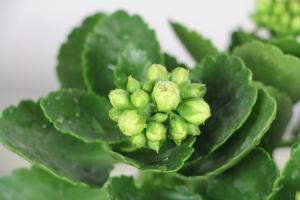How to Bring Outdoor Potted Plants Inside
As the weather turns cold, it's time to bring your outdoor potted plants inside. However, this process can be challenging, especially if you've never done it before. In this article, we'll provide a step-by-step guide on how to bring outdoor potted plants inside, so you can keep your plants alive and healthy throughout the winter season.
Choose the Right Time
The first step in bringing your outdoor potted plants inside is to choose the right time. You should aim to do this when temperatures start to drop below 50°F (10°C) at night, as this is when most plants start to feel the effects of cold weather. Make sure to bring your plants inside before the first frost to avoid any damage to the foliage.
Clean the Plants
Before bringing your plants inside, it's essential to clean them thoroughly. This will help remove any pests or diseases that may have settled on the foliage during the outdoor season. Take a soft cloth or sponge and gently wipe down the leaves and stems of your plant, making sure to remove any dirt, debris, or dead bits of foliage.
Inspect for Pests
While cleaning, inspect your plants for any pests, such as spider mites, aphids, or whiteflies. These bugs can rapidly infest your plant, so it's best to catch them early. If you discover any pests, you can use an organic insecticide to get rid of them or quarantine your plant to prevent the infestation from spreading.
Repot or Prune
During the outdoor season, your potted plants may have outgrown their containers or become root-bound. To ensure they continue to thrive indoors, you may need to repot them into a larger container or prune them to remove any dead or damaged foliage. Repotting also gives you an opportunity to refresh the soil and provide fresh nutrients for your plant to grow.
Acclimate to Indoor Conditions
Once you've cleaned, inspected, and repotted your plants, it's time to acclimate them to indoor conditions gradually. Plants are sensitive to temperature and light changes, so abrupt changes can shock your plants and cause them to drop their leaves or even die. Place your plants in a shaded area at first and gradually move them to a sunnier location over several days.
Monitor Care
Lastly, monitor the care of your indoor potted plants closely. Indoor plants require different care than their outdoor counterparts, including proper watering, humidity levels, and fertilization. Make sure to read up on the specific needs of each of your plants and adjust their care accordingly.
Bringing your outdoor potted plants inside can be a simple and rewarding process, as you'll be able to enjoy your plants all year round. By following the steps outlined in this article, you can ensure that your plants will continue to thrive and bring beauty to your home, even during the winter months.

 how many times do yo...
how many times do yo... how many planted tre...
how many planted tre... how many pine trees ...
how many pine trees ... how many pecan trees...
how many pecan trees... how many plants comp...
how many plants comp... how many plants can ...
how many plants can ... how many plants and ...
how many plants and ... how many pepper plan...
how many pepper plan...





























